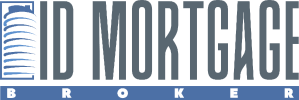Building wealth through real estate sounds simple until it is time to act. Many new investors hesitate before making a move. Should you start with a single rental or wait until you can afford a multi-unit?
What if you choose the wrong area or take on too much debt too soon? Without a clear strategy, building a real estate portfolio can seem overwhelming and uncertain.
ID Mortgage Broker helps you cut through that confusion.
If you are buying your first property or planning to grow your investment property portfolio, we provide smart, flexible financing that supports your long-term goals.
This guide walks you through how to build a real estate portfolio step by step, and how working with the right mortgage broker keeps each decision focused and stress-free.
Here is how to get started with clarity and confidence.
What Is a Real Estate Portfolio?
A real estate portfolio refers to the group of properties held for income generation, capital growth, or both. These properties may be owned by an individual, a partnership, or a business entity, each with clear investment objectives.
Your portfolio might include residential homes, rental apartments, commercial buildings, or undeveloped land. Each property type serves a different purpose. Residential units often rely on appreciation over time.
Rental properties provide recurring income. Commercial assets typically demand more capital but return longer lease terms and higher yields.
Building a real estate portfolio around different property types helps reduce risk. If one market dips, another may hold steady or grow. This balance creates multiple income streams and greater control over your financial future.
With the right structure and planning, your portfolio becomes a working asset that supports long-term growth and financial independence.
How to Build a Real Estate Portfolio from Scratch
Your first decisions carry weight. Starting without a plan can slow your progress or lock you into a property that drains more than it earns. If you want to build a real estate portfolio with confidence, focus on three fundamentals: clear goals, the right property type, and smart financing.
Set Clear Financial and Investment Goals
Begin by defining what success looks like. Do you want steady rental income each month? Are you aiming for long-term growth through rising property values? Or are you looking for tax advantages through depreciation and expense deductions?
These choices shape your strategy. Short-term investors tend to favour properties with immediate cash flow. Long-term investors may prioritise neighbourhoods expected to appreciate over time. In both cases, clear criteria help you avoid impulsive decisions and stay aligned with your broader financial goals.
Decide on Your First Property Type
Your first property sets the tone for your early experience. Choose something you can manage well and understand clearly.
Single-family homes are straightforward and often attract stable tenants. Duplexes allow you to earn rental income while still keeping operations simple. Small multifamily buildings increase earning potential and create a natural path to scale.
Location should support your objectives. Look for areas with strong tenant demand, manageable tax rates, and reliable infrastructure. Assess property condition carefully. A low purchase price can come with expensive surprises if repairs are needed right away.
Explore Financing Options for First-Time Investors
Financing shapes what you can buy and how fast you can grow. Traditional mortgages remain the standard, but they typically require good credit and a strong deposit.
New buyers may qualify for FHA loans in California, which offer a lower entry point with smaller down payment requirements.
Others begin as first-time home buyers in California, using primary residence programs to enter the market with lower upfront costs. This lowers living expenses and redirects more of your income toward growth.
The goal is not to borrow as much as possible. It is to structure your debt in a way that supports long-term progress. The right financing lets you grow your real estate portfolio without adding unnecessary risk.
Building a Rental Portfolio: The Path to Cash Flow and Scale
Learning how to build a rental portfolio is a key step for investors who want consistent, long-term income. Rental properties generate monthly cash flow, and with the right strategy, they can scale into a solid real estate portfolio that supports both stability and growth.
Rental Properties as Portfolio Anchors
Rental assets provide a foundation for recurring income. Unlike properties that rely solely on appreciation, rentals create immediate returns through lease agreements. This income can cover expenses, reduce debt, and fund your next acquisition.
To make informed decisions, understand the metrics that drive performance. Cap rate helps you evaluate property income relative to its price. ROI measures your overall return based on the money you have invested.
Vacancy risk indicates the likelihood that your unit will remain empty, potentially disrupting cash flow. Together, these numbers shape the strength of your rental portfolio over time.
Tools for Managing a Growing Rental Property Portfolio
As your portfolio expands, management becomes more complex. Staying organised is essential.
Start with clear lease agreements, reliable screening processes, and regular maintenance routines. These basic systems reduce tenant turnover and protect your assets. For those managing multiple properties, software tools can simplify rent collection, communication, and expense tracking.
If the workload begins to pull focus away from growth, hiring a property manager may be the better move. A qualified manager helps maintain property value, responds to tenant needs, and keeps income flowing without requiring day-to-day involvement.
How to Grow Your Real Estate Portfolio Over Time
Once your initial properties are stable, growth becomes the next challenge. Knowing how to grow your real estate portfolio means using existing assets wisely, expanding with purpose, and maintaining visibility over performance.
Each move should support long-term returns without creating unnecessary risk.
Leverage Equity to Expand
Your existing properties hold untapped value. As they appreciate or as you reduce loan balances, equity builds—and that equity can be used to fund your next investment.
Two common methods for accessing capital without selling are:
- Refinancing – replaces your current loan with a new one to release equity
- Home Equity Line of Credit (HELOC) – a revolving credit line backed by property value
Both approaches enable you to grow your portfolio while maintaining your income-producing assets.
Diversify Across Markets and Asset Classes
A focused portfolio can limit your flexibility. To reduce exposure and improve resilience, expand across different segments.
Consider:
- Short-term rentals for higher yield potential
- Commercial properties for long-term leases
- REITs for passive income and broader market access
Each type brings unique advantages. The goal is to avoid over-reliance on a single property type or tenant profile.
Keep Portfolio Performance Under Review
Expansion without tracking creates blind spots. Use regular reviews to assess:
- Net cash flow
- Equity growth
- Occupancy rates
- Maintenance costs
These numbers guide future decisions. A property that no longer aligns with your goals may need to be upgraded, refinanced, or sold. Staying proactive helps you protect your gains and move capital where it matters most.
Creating an Investment Property Portfolio That Performs
A strong investment property portfolio is built on consistency. High returns matter, but they depend on stable income and smart asset management. Long-term success comes from performance that holds steady through market shifts.
Focus on Sustainable ROI
Relying on appreciation alone creates unnecessary risk. Property values fluctuate. What keeps your portfolio stable is dependable cash flow.
To build a portfolio that performs over time, prioritise:
- Monthly income that exceeds all expenses
- Low vacancy rates supported by strong tenant demand
- Maintenance costs that stay within manageable limits
These fundamentals allow you to reinvest, grow reserves, and stay financially flexible. Properties that check these boxes support your goals without draining capital.
Avoid Common Portfolio-Building Mistakes
Some of the most costly errors are avoidable with clear planning. Watch out for:
- Overleveraging – borrowing beyond your means, which restricts movement
- No reserves – skipping emergency funds for vacancies, repairs, or maintenance
- Poor market research – buying in areas without steady rental demand
Investors using DSCR loans should review income coverage carefully to avoid taking on unsustainable debt.
Each misstep can stall momentum or force early exits. A high-performing investment property portfolio grows through disciplined decisions.
Building a Real Estate Portfolio Takes Strategy
Building a real estate portfolio requires steady action, not rushed decisions. Progress comes through consistent steps, clear planning, and thoughtful use of your resources. Each move should strengthen your position.
You do not need perfect timing or a flawless setup. What matters is starting with what you know. Choose your first property carefully. Secure the right financing. Track your results. Then apply those lessons as you expand.
Disciplined investors stay focused on the long game. With consistent action, your portfolio will grow along with your financial stability.
Now is the right time to begin. The steps you take today will open the door to every future opportunity.
Need help structuring the right loan for your next investment? If you are scaling with investment property loans or refinancing for growth, ID Mortgage Broker provides tailored strategies to match your goals.




